Contents
This owner’s manual should be considered a permanent part of the
vehicle and should remain with the vehicle when it is sold.
This owner’s manual covers all models of your vehicle. You may find
descriptions of equipment and features that are not on your
particular model.
Images throughout this owner’s manual (including the front cover)
represent features and equipment that are available on some, but
not all, models. Your particular model may not have some of these
features.
This owner’s manual is for vehicles sold in the United States and
Canada.
The information and specifications included in this publication were
in effect at the time of approval for printing. Honda Motor Co., Ltd.
reserves the right, however, to discontinue or change specifications
or design at any time without notice and without incurring any
obligation.
2 Safe Driving P. 21
For Safe Driving P. 22 Seat Belts P. 26 Airbags P. 34
2 Instrument Panel P. 63
Indicators P. 64 Gauges and Displays P. 72
2 Controls P. 75
Setting the Clock P. 76 Locking and Unlocking the Doors P. 77
Opening and Closing the Windows P. 92
Adjusting the Seats P. 103
2 Features P. 121
Audio System P. 122 Audio System Basic Operation P. 125
Bluetooth® HandsFreeLink®
*
P. 140
2 Driving P. 153
Before Driving P. 154 Towing a Trailer P. 159
Refueling P. 186 Fuel Economy P. 189
2 Maintenance P. 191
Before Performing Maintenance P. 192 Maintenance Minder
TM
P. 195
Checking and Maintaining Wiper Blades P. 218
Heating and Cooling
*
System Maintenance P. 233
2 Handling the Unexpected P. 237
Tools P. 238 If a Tire Goes Flat P. 239
Overheating P. 254 Indicator, Coming On/Blinking P. 256
2 Information P. 267
Specifications P. 268 Identification Numbers P. 270
Emissions Testing P. 273 Warranty Coverages P. 275
Main Menu
2014 FIT Online Reference Owner’s Manual

Contents
This owner’s manual should be considered a permanent part of the
vehicle and should remain with the vehicle when it is sold.
This owner’s manual covers all models of your vehicle. You may find
descriptions of equipment and features that are not on your
particular model.
Images throughout this owner’s manual (including the front cover)
represent features and equipment that are available on some, but
not all, models. Your particular model may not have some of these
features.
The information and specifications included in this publication were
in effect at the time of approval for printing. Honda Motor Co., Ltd.
reserves the right, however, to discontinue or change specifications
or design at any time without notice and without incurring any
obligation.
2 Safe Driving P. 29
For Safe Driving P. 30 Seat Belts P. 34 Airbags P. 41
2 Instrument Panel P. 69
Indicators P. 70 Gauges and Multi-Information Displays P. 81
2 Controls P. 97
Locking and Unlocking the Doors P. 98
Opening and Closing the Windows P. 109
Adjusting the Seats P. 120
Interactive Remote P. 136
2 Features P. 141
Audio System P. 142
2 Driving P. 143
Before Driving P. 144 When Driving P. 150
Charging P. 171 Energy Economy P. 184
2 Maintenance P. 187
Before Performing Maintenance P. 188 Maintenance MinderTM P. 191
Checking and Maintaining Wiper Blades P. 207
Interactive Remote Care P. 222
2 Handling the Unexpected P. 227
Tools P. 228 If a Tire Goes Flat P. 229
Indicator, Coming On/Blinking P. 242 Fuses P. 245
When You Cannot Open the Charge Lid P. 252
2 Information P. 253
Specifications P. 254 Identification Numbers P. 255
Warranty Coverages P. 258 Authorized Manuals P. 259

Contents
Child Safety P. 56 Safety Labels P. 68
Opening and Closing the Tailgate P. 105 Security System P. 107
Operating the Switches Around the Steering Wheel P. 111 Adjusting the Mirrors P. 119
Interior Lights/Interior Convenience Items P. 126 Climate Control System P. 133
Braking P. 165 Parking Your Vehicle P. 169 Rearview Camera P. 170
Modifications P. 185
Maintenance Schedule P. 193 Maintenance Under the Hood P. 195 Replacing Light Bulbs P. 202
Checking and Maintaining Tires P. 211 12 Volt Battery P. 220 Remote Transmitter Care P. 221
Climate Control System Maintenance P. 223 Cleaning P. 224
Power System Won’t Start P. 237 Jump Starting P. 238 Shift Lever Does Not Move P. 240
Emergency Towing P. 250 When You Cannot Open the Tailgate P. 251
Quick Reference Guide
Safe Driving
Instrument Panel
Controls
Features
Driving
Maintenance
Handling the Unexpected
Information
Index
P. 2
P. 29
P. 69
P. 97
P. 141
P. 143
P. 187
P. 227
P. 253
P. 261
Devices that Emit Radio Waves P. 256 Reporting Safety Defects P. 257
Customer Service Information P. 260

Quick Reference Guide
Quick Reference Guide
❙ Navigation System
() See the Navigation System Manual
❙ (Vehicle Stability Assist (VSA®)
System OFF) Button
(P161)
❙ Hazard Warning Button
❙ Steering Wheel Adjustments (P118)
❙ Power Switch (P111)
❙ Climate Control System (P133)
❙ Door Mirror Controls (P119)
❙ Gauges (P81)
❙ Multi-Information Display (P83)
❙ System Indicators (P70)
❙ Rear Window Defogger (P117)
❙ km/mph Change Button (P81)
❙ Charge Lid Release Button (P173, 175)
❙ SPORT Mode Button (P155)
❙ ECON Mode Button (P155)
❙ NORMAL Mode Button (P155)
Visual Index
2

❙ Headlights/Turn Signals (P112)
❙ Wipers/Washers (P114)
❙ Brightness Control (P116)
❙ Audio Remote Control Buttons
() See the Navigation System Manual
❙ Navigation System Voice Control Buttons
() See the Navigation System Manual
❙ Cruise Control Buttons (P157)
❙ Horn (Press an area around .)
❙ SEL/RESET Button (P83, 89)
❙ (Information) Button (P83, 89)
❙ Bluetooth® HandsFreeLink® System
() See the Navigation System Manual
3

Visual Index
❙ Parking Brake (P165)
❙ Hood Release Handle (P196)
❙ Power Window Switches (P109)
❙ Passenger’s Front Airbag
(P44)
❙ Interior Fuse Box (P247)
❙ Driver’s Front Airbag (P44)
❙ Power Door Lock Master Switch (P102)
❙ Rearview Mirror (P119)
❙ Shift Lever
Transmission
(P153)
❙ Seat Heater Switches
(P132)
❙ Glove Box (P128)
4

❙ Seat Belt (Installing a Child Seat) (P63)
❙ Map Lights (P126)
❙ Side Curtain Airbags (P51)
❙ Ceiling Light (P126)
❙ Cargo Floor Box (P130)
❙ Cargo Area Light (P127)
❙ Seat Belt to Secure a Child Seat (P64)
❙ Grab Handle
❙ Coat Hook (P131)
❙ Accessory Power Socket
(P130)
❙ USB Adapter Cable
() See the Navigation System Manual
❙ Seat Belts (P34)
❙ Rear Seat (P125)
❙ LATCH to Secure a Child Seat (P61)
❙ Charging Cable (P173)
❙ Side Airbags (P48)
❙ Auxiliary Input Jack
() See the Navigation System Manual
❙ Front Seat (P120)
❙ Sun Visors
❙ Vanity Mirrors
5

Visual Index
❙ Maintenance Under the Hood (P195)
❙ Windshield Wipers (P114, 207)
❙ Door Lock/Unlock Control (P100)
❙ Power Door Mirrors (P119)
❙ How to Charge (P171)
❙ Headlights (P112, 202)
❙ Front Turn Signal/Parking/Side Marker Lights
(P112, 203, 204)
❙ Tires (P211, 229)
6

❙ High-Mount Brake Light (P206)
❙ Tailgate Open Handle (P106)
❙ Opening/Closing the Tailgate (P105)
❙ Rear Wiper (P115, 209)
❙ Audio Antenna
❙ Rearview Camera
() See the Navigation System Manual
❙ Back-Up Lights (P205)
❙ Brake/Taillights (P205)
❙ Rear Turn Signal Lights (P205)
7

Making Good Use of Your Honda Electric Vehicle
Select Your Preferable
Driving Performance.
Using the 3-mode drive system, an extended
range can be achieved.
Charging at Home
Your Honda electric vehicle can be charged
with an appropriately configured household
outlet. If a timer has been set, charging
automatically starts and ends.
2 3-Mode Drive System P. 14, 155
2 Charging P. 171, 174
2 Using a Timer P. 182
8

Parking
There are several things you need to
know when parking your Honda
electric vehicle.
2 High Voltage Battery P. 181
How the electric vehicle
works
An electric motor propels your Honda
electric vehicle.
2 How the Electric Vehicle Works
P. 10
9

How the Electric Vehicle Works
Instead of using gasoline to power an internal combustion engine, your vehicle uses
stored electricity to power an electric propulsion motor. When decelerating, or going
down hills, the electric propulsion motor also acts as a generator to recover a portion
of the electrical energy that was used to accelerate the vehicle. This regenerative
braking works in a manner similar to engine braking on a gasoline powered vehicle,
and is enhanced with the shift lever in .
As with a gasoline powered vehicle, the efficiency of an electric vehicle (and the
vehicle’s range) is most impacted by the driver’s driving style. Climate control system
usage also has a strong impact with heavy usage negatively affecting the vehicle’s
range.
There are two types of batteries used in this vehicle, a standard 12 volt battery that
powers the airbags, the interior and exterior lights, and other standard 12 volt
systems, and a high voltage lithium ion battery that is used to power the propulsion
motor and recharge the 12 volt battery.
High Voltage Battery
Learning about the High Voltage battery’s characteristics will help you get the best
handling and maximize the range of your electric vehicle.
(P181)
Charging the High Voltage Battery
You can recharge the High Voltage battery using a standard household outlet or at a
public charging station.
(P171)
10

Safety Precautions
Do not touch the High Voltage system
As much as 400 volts runs through the High Voltage system. Attempting to take a system
component apart or disconnect one of its wires can cause severe electrical shock. If the High
Voltage system needs maintenance or repairs, it should be performed at an authorized
Honda Fit EV dealer.
If a crash occurs
• Be careful of electric shock hazard.
u If a severe crash damaged your vehicle’s High Voltage system, there is a possibility of
electrical shock due to exposed High Voltage components or wires. If this happens, do
not touch any of the High Voltage system components or any of its orange wires.
• Avoid contact with High Voltage battery fluid.
u The High Voltage battery contains a flammable electrolyte that could leak as a result of
a severe crash. Avoid any skin or eye contact with the electrolyte as it is corrosive. If
you accidentally touch it, flush your eyes or skin with a large quantity of water for at
least five minutes, and seek medical attention immediately.
•
Use a fire extinguisher for an electrical fire.
u Attempting to extinguish an electrical fire with a small quantity of water, from a garden
hose for instance, can be dangerous.
• Anytime the vehicle is damaged in an accident, have it repaired by an authorized Honda
Fit EV dealer.
Emergency Shutdown System for the High Voltage System
The emergency shutdown system may activate when the vehicle is impacted by some incident
such as a crash and a collision. When this system activates, the High Voltage system
automatically shuts down, and your vehicle no longer moves.
To recover the High Voltage system back in operation, consult an authorized Honda Fit EV
dealer.
Honda collects and recycles used High Voltage batteries used in its vehicles – consult an
authorized Honda Fit EV dealer for more information.
High Voltage System Power Cable
High Voltage Battery
11

Eco Assist System
Ambient Meter
● Changes color to reflect your driving style.
Green: Energy efficient driving
Light green: Moderate acceleration/deceleration
White: Aggressive acceleration/deceleration
● Changes to constant red when SPORT mode is selected.
● The ambient meter color changes in accordance with your brake or accelerator pedal operation.
12

Drive Cycle Score/Lifetime Points
● Comes on when the power switch is in LOCK (0.
Real Time Score (represents your current trip) (P87)
● Each time you turn the power switch to ON
(w, the ecological screen starts without any leaves on the plants. Leaves accumulate or
diminish based on your driving style during the current trip.
Feedback with Eco Drive Bar (P88)
● Keep the bar from extending
too much to the left or right
side. The shorter the bar is while
driving, the higher the fuel
economy becomes.
Advancing to Second Stage
Receding to First Stage
Advancing to Third Stage
Receding to Second Stage
Drive Cycle Score
Lifetime Points
The bar extends to
the left when you
press the brake
pedal.
The bar extends to
the right when you
press the accelerator
pedal.
Slow deceleration/
Maximizes fuel economy
Slow, steady acceleration/
Maximizes fuel economy
Moderate deceleration
Moderate acceleration
Aggressive deceleration
Aggressive/Inconsistent
acceleration
First Stage
Second Stage
Third Stage
13

3-Mode Drive System
SPORT Mode
Increases motor performance. Suitable for
driving in hills or curves on a mountain, or
driving in a suburb.
NORMAL Mode
Balances driving performance and energy
economy. Best for most driving situations.
ECON Mode
Maximizes energy economy.
POWER/CHARGE Gauge
(with SPORT Mode)
●
The POWER/CHARGE gauge
extends to indicate increased
power.
Changes the color to reflect your
driving mode.
SPORT Mode: Red
NORMAL Mode: White
ECON Mode: Green
Range Display
The displayed range changes by your selected driving mode.
There are three driving modes for your vehicle: SPORT, NORMAL, and ECON. Each mode offers a different level of driving performance. The
mode buttons are located on the control panel.
14

Airbags (P41)
● Your vehicle is fitted with airbags to help protect you and
your passengers during a moderate-to-severe collision.
Child Safety (P56)
● All children 12 and younger should be seated in the rear seat.
● Smaller children should be properly restrained in a forward-facing child seat.
● Infants must be properly restrained in a rear-facing child seat.
Before Driving Checklist (P144)
● Before driving, check that the front seats, head restraints,
steering wheel, and mirrors have been properly adjusted.
Seat Belts (P34)
● Fasten your seat belt and sit upright well
back in the seat.
● Check that your passengers are wearing
their seat belts correctly.
Fasten your lap belt as
low as possible.
Safe Driving (P 29)
15

Instrument Panel (P69)
Lights Reminders
Anti-lock Brake
System (ABS)
Indicator
Vehicle Stability
Assist (VSA®) System
Indicator
VSA® OFF Indicator
Electric Power
Steering (EPS) System
Indicator
Lights On Indicator
High Beam Indicator
Immobilizer System
Indicator
Seat Belt Reminder
Indicator
System Indicators
CRUISE MAIN
Indicator
Supplemental
Restraint System
Indicator
Side Airbag Off
Indicator
Door and Tailgate
Open Indicator
Speedometer
Security System Alarm Indicator
Shift Lever Position Indicator
Gauges (P81)/Multi-Information Display (P83)/System Indicators (P70)
Turn Signal and
Hazard Warning
Indicators
System Indicators System Indicators
Low Tire Pressure/
TPMS Indicator
CRUISE CONTROL
Indicator
System Indicators
12 Volt Charging
System Indicator
Charge Connector
Indicator
POWER REDUCED
Indicator
POWER SYSTEM
Indicator
System Message
Indicator
SPORT Mode
Indicator
NORMAL Mode
Indicator
ECON Mode
Indicator
Brake System
Indicator (Amber)
Brake Warning
Indicator (Red)
Low Charge
Indicator
Electricity Consumption
Indicators
Multi-Information Display
High Voltage Battery
Charge Level Gauge
POWER/CHARGE
Gauge
Range Display
16
B

Controls (P97)
Turn Signal Control Lever
Right
Left
Light Control Switches
Low Beam
High Beam
Flashing
Wiper/Washer Control Lever
MIST
OFF
INT: Low speed with intermittent
LO: Low speed wipe
HI: High speed wipe
Pull toward
you to spray
washer fluid.
The navigation system receives signals from
GPS satellites, updating the clock
automatically.
Audio System (P142)
() See the Navigation System Manual
Clock
Turn Signals (P112)
Lights (P112)
Wipers and Washers
(P114)
17

Steering Wheel (P118)
Selector Switch
Adjustment Switch
Power Window Lock Button
Window
Switch
● To adjust, pull the adjustment lever
towards you, adjust to the desired
position, then lock the lever back in place.
Tailgate (P105)
● To open the tailgate, pull the tailgate
open handle, and lift up.
Power Door Mirrors
(P119)
● With the power switch in ON
the selector switch to L or R.
● Push the appropriate edge of the
adjustment switch to adjust the mirror.
(w, move
Power Windows (P109)
● With the power switch in ON
and close the power windows.
● If the power window lock button is in the
off position, each passenger’s window
can be opened and closed with its own
switch.
● If the power window lock button is in the
on position, each passenger’s window
switch is disabled.
(w, open
18

Climate Control System (P133)
AUTO Button
Air flows from floor and
windshield defroster vents.
Air flows from floor vents.
Air flows from floor and
dashboard vents.
Air flows from dashboard
vents.
ON/OFF Button
A/C (Air Conditioning) Button
(Windshield Defroster) Button
(Recirculation) Button
Fan Control Bar
Temperature
Control Bar
MODE Control Button
(Fresh Air) Button
Interactive Remote (P136)
● Charging the High Voltage battery
● Turning on the climate control system
1. Make sure the charge connector cable is
plugged in.
2. Press the power button.
3. Press and hold the Charge button.
u The beeper sounds once.
1. Press the power button.
2. Press and hold the Climate button.
u The beeper sounds once.
Charge Button
Climate Button
Power Button
● Press the AUTO button to activate the climate control system.
● Press the button to defrost the windshield.
● Press the ON/OFF button to turn the system on or off.
● The climate control system is voice operable. See the navigation system manual for
complete details.
19

Smartphone App () Visit owners.honda.com/apps
Downloading the smartphone app for the telematics allows for remotely checking your vehicle’s latest status, such as the charge level, and
the interior temperature, starting the vehicle charge, and turning on the climate control system.
The table below shows what you can using the interactive remote, or smartphone app.
*1:Charge timer can also be set using the multi-information display. (P182)
Features Items Interactive Remote Smartphone App
Receiving the vehicle information High Voltage battery charge level
Interior temperature
Charging status
Climate control system status
Detailed status
Charging the vehicle remotely Start/Stop
Turning on and off the climate control system
remotely
Start/Stop
Setting the charging timer
*1
Setting
Climate control timer setting at full charge Setting
20

Driving (P143)
Depress the brake pedal and press
the release button to move out of
(P.
Shifting
Park
Used when parking or turning the power on or off.
Reverse
Used when reversing.
Neutral
Drive
Used for normal driving.
Drive (B)
●
Used when driving down a long hill
●
Used to increase regenerative braking.
Move the shift lever without
pressing the release button.
Press the release button to move
the shift lever.
Shift Lever
Release Button
Transmission (P152)
● Shift to
(P and depress the brake pedal when turning on the power.
21

VSA® OFF Button (P161)
● The vehicle stability assist (VSA®) system
helps stabilize the vehicle during
cornering, and helps maintain traction
while accelerating on loose or slippery
road surfaces.
● VSA® comes on automatically every time
you turn on the power system.
● To turn VSA® on or off, press and hold
the button until you hear a beep.
Cruise Control (P157)
● Cruise control allows you to maintain a
set speed without keeping your foot on
the accelerator pedal.
● To use cruise control, press the CRUISE
button, then press DECEL/SET once you
have achieved the desired speed (above
25 mph or 40 km/h).
Tire Pressure Monitoring
System (TPMS)
● TPMS monitors tire pressure.
● TPMS is turned on automatically every
time you turn on the power system.
(P162)
22

Maintenance (P187)
Under the Hood (P195)
● Check coolants and windshield washer fluid. Add when
necessary.
● Check brake fluid.
● Check the 12 volt battery condition monthly.
a Pull the hood release handle under the corner of the
dashboard.
b Locate the hood latch lever, pull the lever up, and lift up
the hood.
c When finished, close the hood and make sure it is firmly
locked in place.
Lights (P202)
● Inspect all lights regularly.
Wiper Blades (P207)
● Replace blades if they leave streaks
across the windshield.
Tires (P211)
● Inspect tires and wheels regularly.
● Check tire pressures regularly.
● Install snow tires for winter
driving.
23

Handling the Unexpected (P227)
Flat Tire (P229)
● Park in a safe location and repair the flat
tire using the tire repair kit in the cargo
area.
Blown Fuse (P245)
● Check for a blown fuse if an electrical
device does not operate.
Power System Won’t
Start
● If the 12 volt battery is dead, jump start
(P237)
using a booster battery.
Emergency Towing (P250)
● Call a professional towing service if you
need to tow your vehicle.
Indicators Come On
(P242)
● Identify the indicator and consult the
owner’s manual.
24

What to Do If
The power switch does not
turn from
(0 to (q. Why?
The power switch does not
turn from
(q to (0 and I
cannot remove the key.
Why?
Why does the brake pedal
pulsate slightly when
applying the brakes?
The rear door cannot be
opened from inside the
vehicle. Why?
●
The steering wheel may be locked.
●
Try to turn the steering wheel left and right
while turning the key.
The shift lever should be moved to (P.
This can occur when the ABS activates, and does not indicate a
problem. Apply firm, steady pressure on the brake pedal. Never
pump the brake pedal.
Check if the childproof lock is in the
lock position. If so, open the rear door
with the outside door handle.
To cancel this function, push the lever
to the unlock position.
25

Why do the doors lock
after I unlocked the doors
using a remote
transmitter?
If you do not open the doors within 30 seconds, the doors are
relocked automatically for security.
Why does the beeper
sound when I open the
driver’s door?
Why does the beeper
sound when I start driving?
Why do I hear a screeching
sound when I apply the
brake pedal?
The beeper sounds when:
●
The key is left in the power switch.
●
The exterior lights are left on.
The beeper sounds when:
●
Driver and/or front passenger are not wearing their seat belts.
●
The parking brake lever is not fully released.
The brake pads may need to be replaced. Have your vehicle
inspected by an authorized Honda Fit EV dealer.
26

WARNING: This product contains or emits
chemicals known to the state of California to cause
cancer and birth defects or other reproductive
harm.
California Proposition 65 Warning
To read data recorded by an EDR, special equipment is required,
and access to the vehicle or the EDR is needed. In addition to the
vehicle manufacturer, other parties, such as law enforcement, that
have the special equipment, can read the information if they have
access to the vehicle or the EDR.
Event Data Recorders
This vehicle is equipped with an event data recorder (EDR).
The main purpose of an EDR is to record, in certain crash or near
crash-like situations, such as an air bag deployment or hitting a
road obstacle, data that will assist in understanding how a vehicle’s
systems performed. The EDR is designed to record data related
to vehicle dynamics and safety systems for a short period of
time, typically 30 seconds or less. The EDR in this vehicle is
designed to record such data as:
• How various systems in your vehicle were operating;
• Whether or not the driver and passenger safety belts were
buckled/fastened;
• How far (if at all) the driver was depressing the accelerator
and/or brake pedal; and,
• How fast the vehicle was traveling.
These data can help provide a better understanding of the
circumstances in which crashes and injuries occur. NOTE: EDR data
are recorded by your vehicle only if a non-trivial crash situation
occurs; no data are recorded by the EDR under normal driving
conditions and no personal data (e.g., name, gender, age, and
crash location) are recorded. However, other parties, such as law
enforcement, could combine the EDR data with the type of
personally identifying data routinely acquired during a crash
investigation.
The data belongs to the vehicle owner and may not be accessed by
anyone else except as legally required or with the permission of the
vehicle owner.
Service Diagnostic Recorders
This vehicle is equipped with service-related devices that record
information about powertrain performance. The data can be used
to verify emissions law requirements and/or help technicians
diagnose and solve service problems. It may also be combined with
data from other sources for research purposes, but it remains
confidential.
Vehicle Telematics and High-Voltage Battery
Monitoring System
This vehicle is equipped with monitoring systems that record
vehicle specific (VIN based) information about how the
vehicle is being driven (e.g., speed, acceleration, mileage,
driving time), vehicle location (latitude, longitude, time), and
battery condition while the system is powered on, and then
automatically transmits this data to Honda every few
minutes. The data transmission system is designed to be
secure and is only to be used by Honda. Honda may use the
data to help diagnose problems that may arise with the vehicle and
may also combine it with other data for research purposes.
27

Regardless of its use, Honda will keep the data confidential and will
not permit others to access it unless such access is legally required.
You will find this important safety information in a variety of forms,
including:
California Perchlorate Contamination Prevention Act
The airbags, seat belt tensioners, and CR type batteries in this
vehicle may contain perchlorate materials — special handling may
apply. See www.dtsc.ca.gov/hazardouswaste/perchlorate/
As you read this manual, you will find information that is preceded
by a symbol. This information is intended to help you avoid
damage to your vehicle, other property, or the environment.
A Few Words About Safety
Your safety, and the safety of others, is very important. And
operating this vehicle safely is an important responsibility.
To help you make informed decisions about safety, we have
provided operating procedures and other information on labels and
in this manual. This information alerts you to potential hazards that
could hurt you or others.
● Safety Labels — on the vehicle.
● Safety Messages — preceded by a safety alert symbol
one of three signal words: DANGER, WARNING, or CAUTION.
These signal words mean:
You WILL be KILLED or SERIOUSLY HURT if
you don’t follow instructions.
You CAN be KILLED or SERIOUSLY HURT if
you don’t follow instructions.
You CAN be HURT if you don’t follow
instructions.
● Safety Headings — such as Important Safety Precautions.
● Safety Section — such as Safe Driving.
● Instructions — how to use this vehicle correctly and safely.
This entire book is filled with important safety information — please
read it carefully.
3 and
Of course, it is not practical or possible to warn you about all the
hazards associated with operating or maintaining your vehicle. You
must use your own good judgement.
28

Safe Driving
You can find many safety recommendations throughout this chapter, and throughout this manual.
For Safe Driving
Important Safety Precautions …………. 30
Your Vehicle’s Safety Features………… 32
Seat Belts
About Your Seat Belts…………………… 34
Fastening a Seat Belt…………………….. 37
Seat Belt Inspection………………………. 40
Airbags
Airbag System Components…………… 41
Types of Airbags ………………………….. 44
Front Airbags (SRS) ………………………. 44
Side Airbags………………………………… 48
Side Curtain Airbags …………………….. 51
Airbag System Indicators……………….. 52
Airbag Care ………………………………… 55
Child Safety
Protecting Child Passengers …………… 56
Safety of Infants and Small Children .. 58
Safety of Larger Children ………………. 66
Safety Labels
Label Locations ……………………………. 68
29
Loading…
2014 Honda Fit Shuttle Owners Manual
2014 Honda Fit Shuttle Owners Manual should be considered a permanent part of the vehicle and should remain with the vehicle when it is sold.
2014 Honda Fit Shuttle Owners Manual covers all models of your vehicle. You may find descriptions of equipment and features that are not on your particular model.
Images throughout this owner’s manual (including the front cover) represent features and equipment that are available on some, but not all, models. Your particular model may not have some of these features.
2014 Honda Fit Shuttle Owners Manual is information and specifications included in this publication were in effect at the time of approval for printing. Honda Motor Co., Ltd. reserves the right, however, to discontinue or change specifications or design at any time without notice and without incurring any obligation.
Readmore and Download 2014 Honda Fit Shuttle Owners Manual
| Title | : 2014 Honda Fit Shuttle Owners Manual |
| Format | |
| Pages | : 239 Pages |
| Language | : Japan |
| File Size | : 12 MB |


Комментарии
13
Войдите или зарегистрируйтесь, чтобы писать комментарии, задавать вопросы и участвовать в обсуждении.
Ни у кого такого нет?)
А как перевести на русский?
Вставляете ссылку вот сюда translate.google.com/ и выберите на какой язык вам перевести. Денег не надо, только спасибо!
Пост конечно хороший, но не поможет, народ настолько отупел что даже не предполагает что инструкция по эксплуатации находится на сайте производителя.
Я езжу на Isuzu Bighorn (II)
Все с телефона работает. Почти четыреста страниц « веселых картинок» с объяснениями о том как включаются поворотники и как правильно пристегиваться ремнями безопасности)))
И как вооон та лампочка называется и как буксировать и какие куда жижи льются чтобы вопросы в телегах и на форумах не задавать.
Скорее всего через комп нудно зайти. Это уже вторая ссылка, которая не открывается. Но я так и не добрался до компа там попробовать.
Fenix125rus
Ссылка не работает
Manufacturer: HONDA, Model Year: 2014,
Model line: FIT,
Model: HONDA FIT 2014 3.G
Pages: 289, PDF Size: 6.97 MB
Trending: oil viscosity, TPMS, clock reset, USB, child seat, Bluetooth, automatic transmission fluid
Page 1 of 289
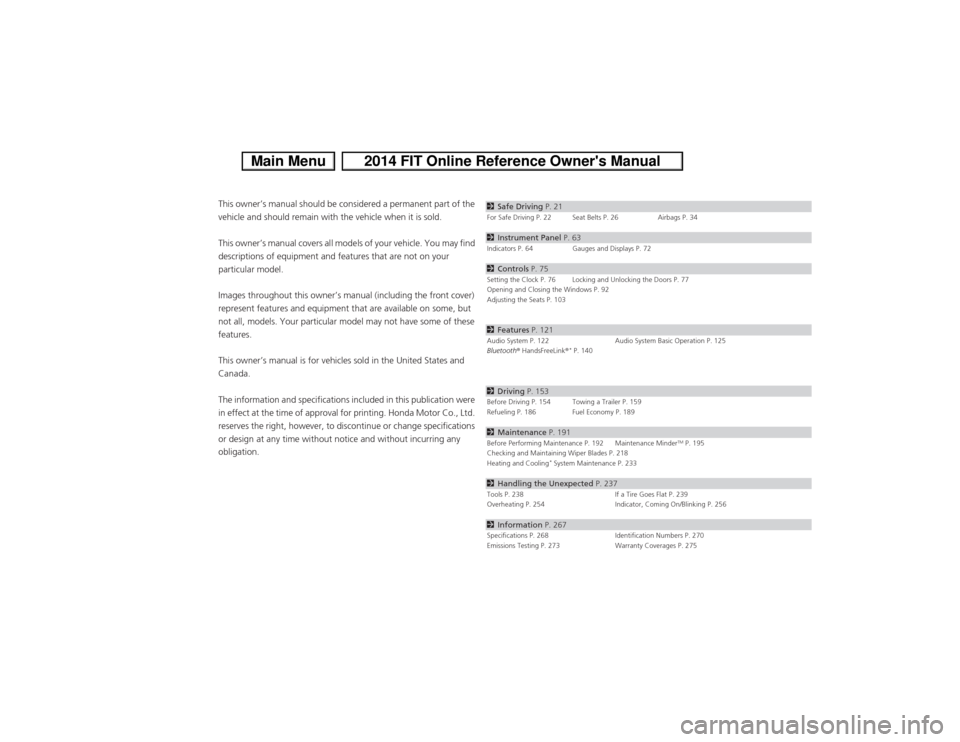
Page 2 of 289
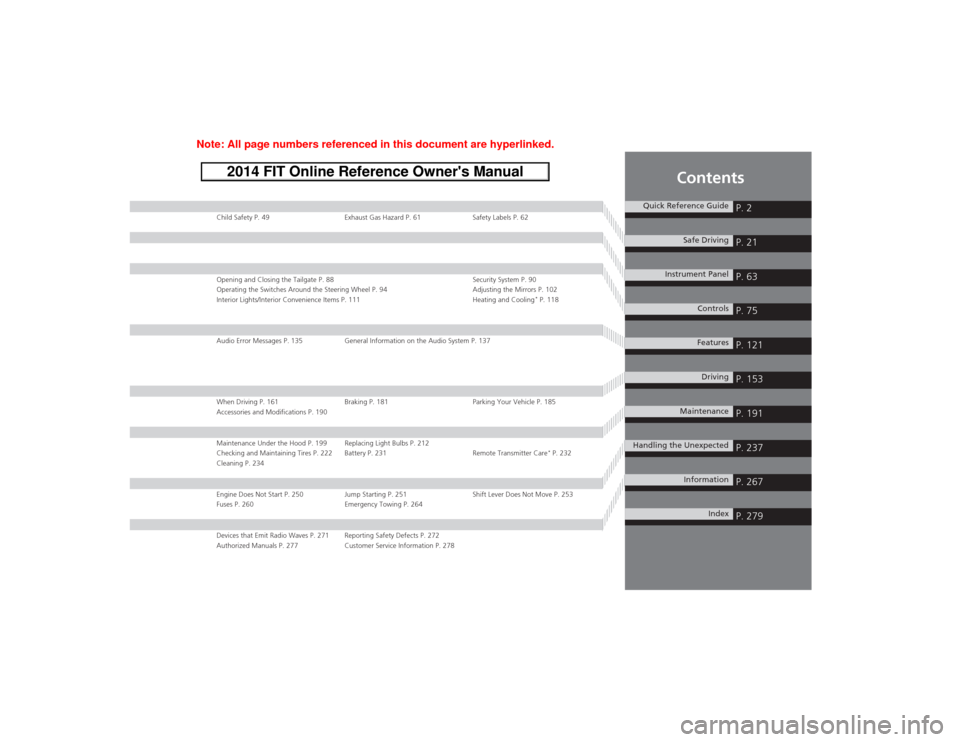
Page 3 of 289
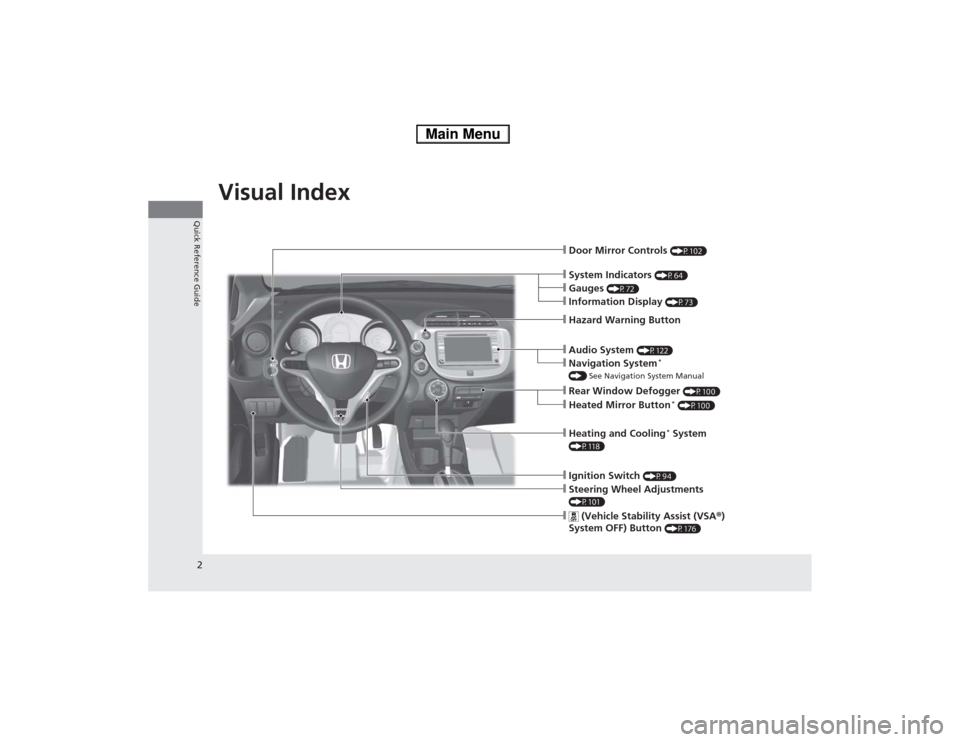
Page 4 of 289
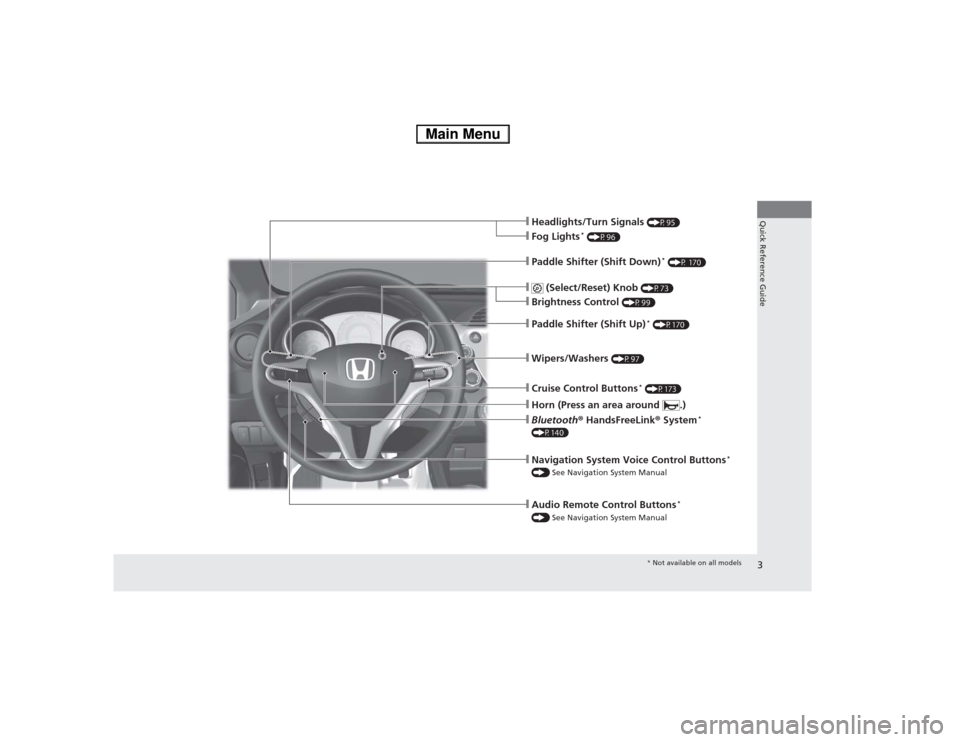
Page 5 of 289
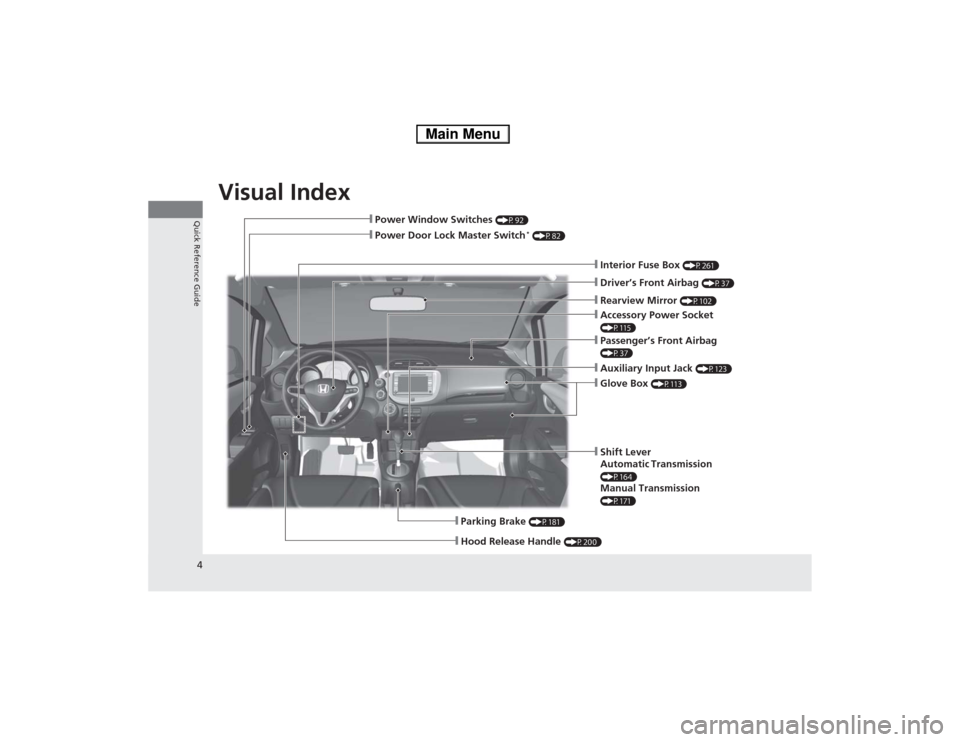
Page 6 of 289
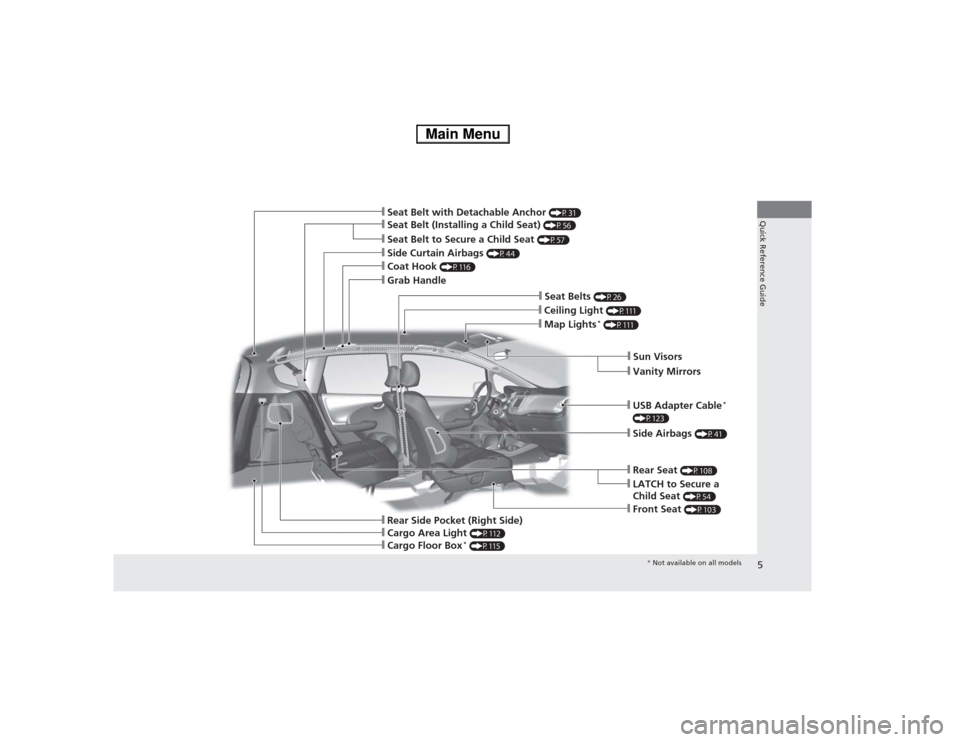
Page 7 of 289
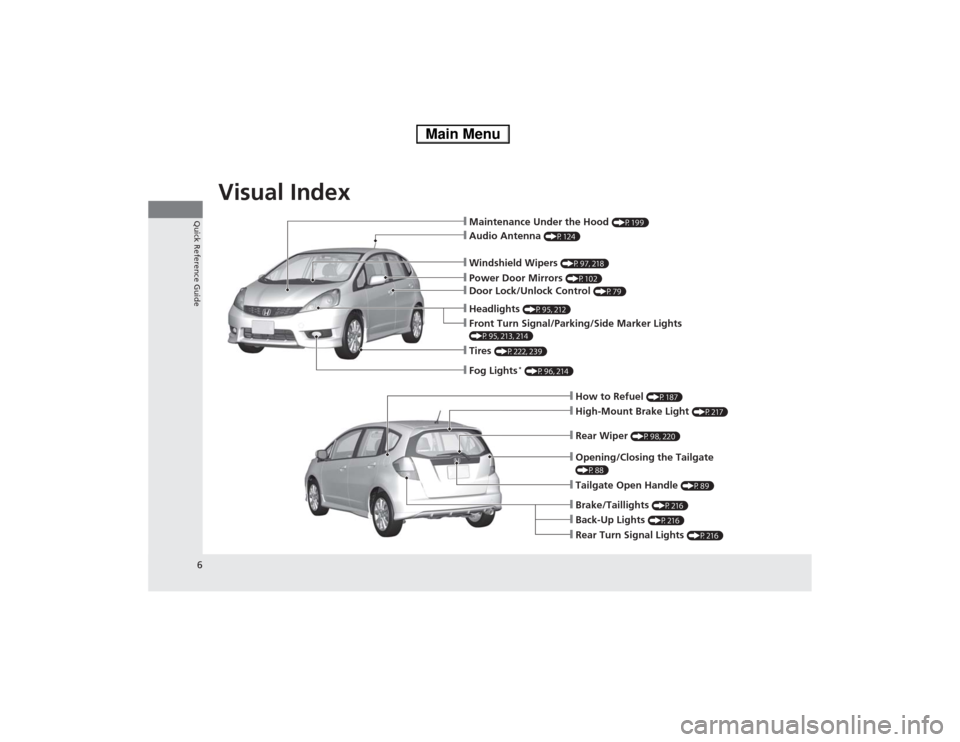
Page 8 of 289
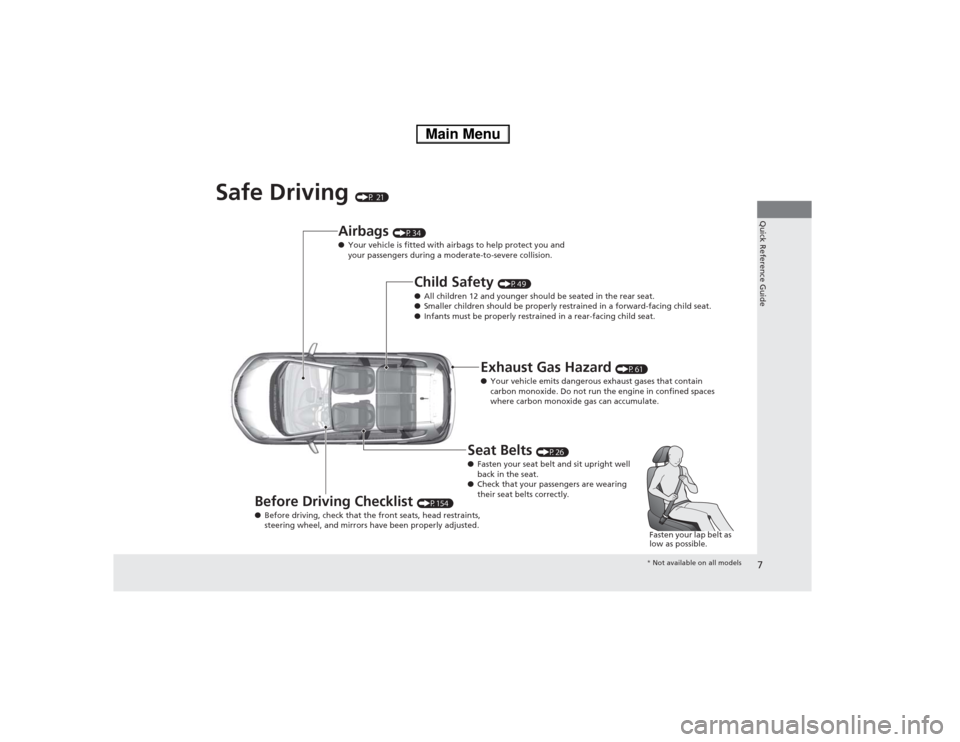
Page 9 of 289
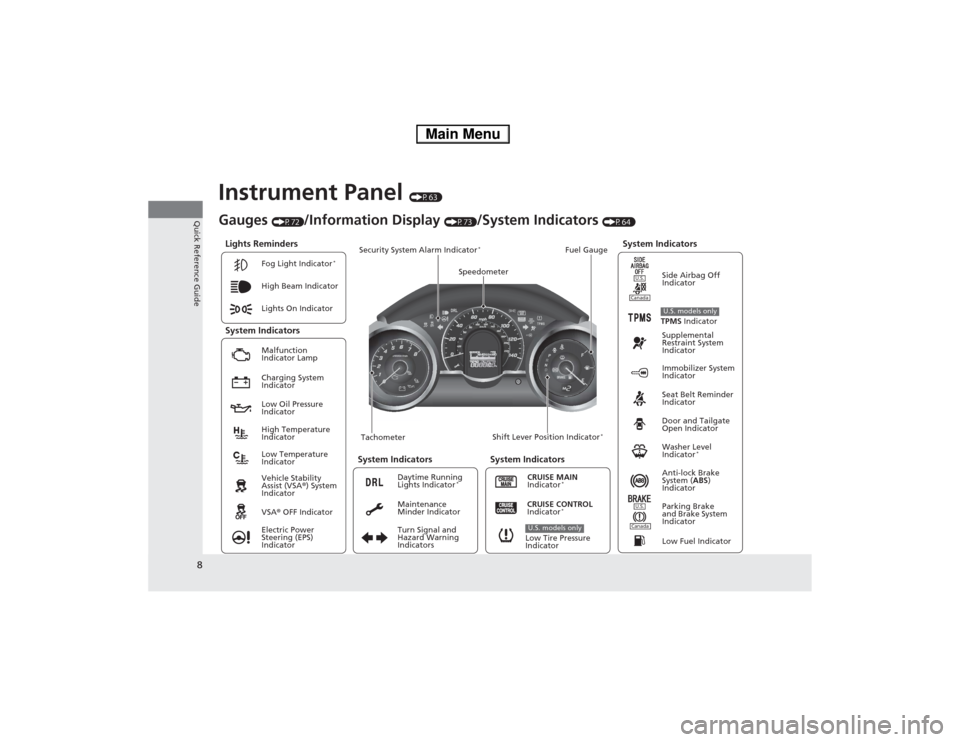
Page 10 of 289
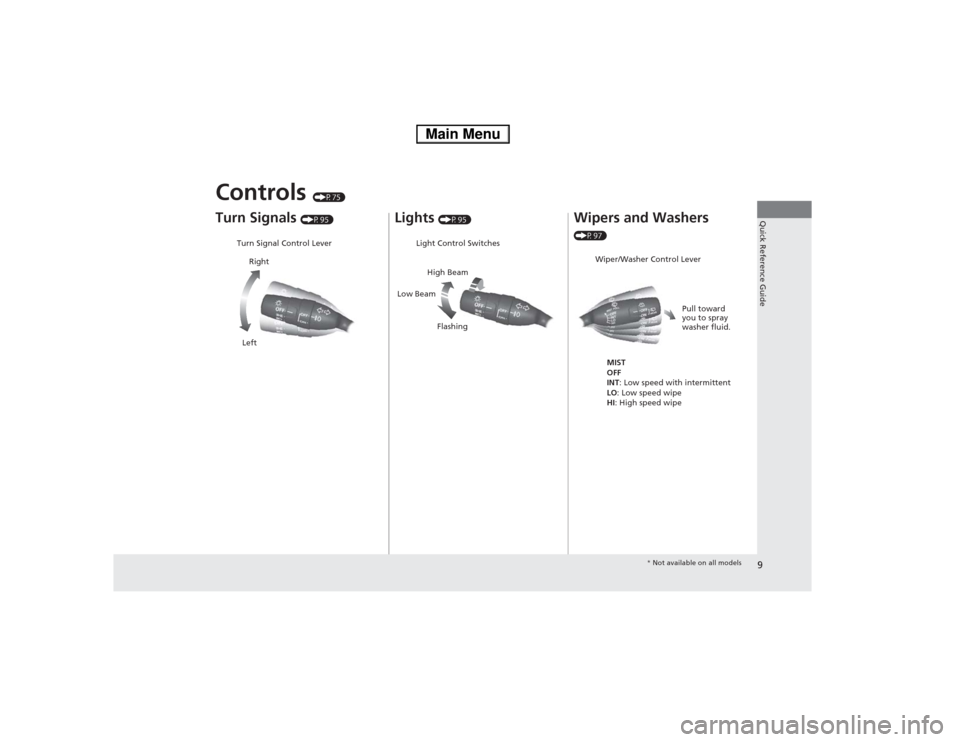
- Load next 10 pages
Trending: USB port, phone, tow, charging, oil level, snow chains, battery
View, print and download for free: HONDA FIT 2014 3.G Owners Manual, 289 Pages, PDF Size: 6.97 MB. Search in HONDA FIT 2014 3.G Owners Manual online. CarManualsOnline.info is the largest online database of car user manuals. HONDA FIT 2014 3.G Owners Manual PDF Download.
All product names, logos, and brands are property of their respective owners.
Privacy Policy | About Us & Contact
